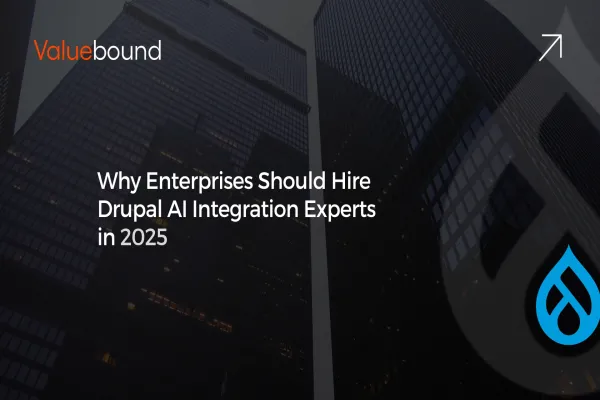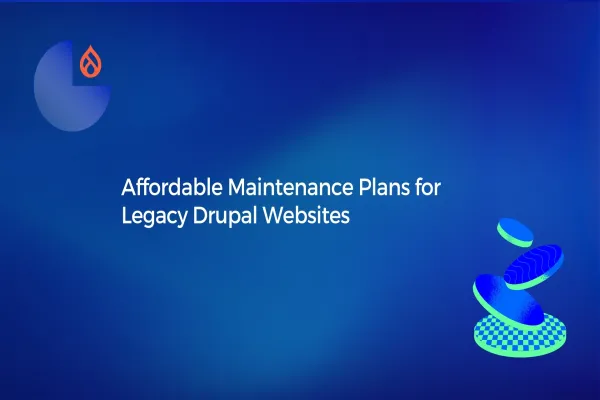Maintaining a competitive edge often requires businesses to evolve their online presence. For many organizations relying on Drupal, this evolution comes in the form of a Drupal migration – a strategic move to leverage newer technology, improved security, and enhanced functionality.
Understanding Drupal Migration
Drupal migration represents the process of transferring content, users, configurations, and functionality from one Drupal version to another, or from a different content management system to Drupal. This technical endeavor goes beyond simple data transfer; it's an opportunity to restructure content, optimize workflows, and implement new features that align with evolving business objectives.
Successful Drupal migration services often involve careful planning, execution, and post-migration support. Organizations undertake Drupal migration for various reasons – from security concerns to performance enhancements, increased scalability, or access to modern features unavailable in older versions.
The Distinction Between Drupal Feeds and Migrate
When planning a Drupal migration, understanding available tools becomes crucial. Two common approaches are Drupal Feeds and the Migrate module, each serving different purposes in the migration ecosystem.
Drupal Feeds primarily functions as an importer, designed for occasional or periodic data imports. It's user-friendly with a UI-based approach that allows non-developers to create and maintain imports. However, Feeds lacks the comprehensive features needed for complex, large-scale migrations.
In contrast, the Migrate module offers a robust framework specifically built for sophisticated Drupal migration scenarios. It provides greater flexibility, better performance for large datasets, and more precise control over the migration process. The Migrate module has become the standard approach for Drupal migration services, especially for enterprise-level transitions.
The key difference lies in their intended use: Feeds works well for simple, ongoing imports, while Migrate excels at comprehensive, one-time migrations with complex requirements. Most professional Drupal migration services rely on the Migrate module due to its powerful capabilities and alignment with Drupal's core architecture.
Navigating Drupal 7 to Drupal 9 Migration
The journey from Drupal 7 to Drupal 9 represents a significant technological leap. This Drupal migration path requires careful planning as the architectural differences between these versions are substantial.
A typical Drupal migration from 7 to 9 involves several phases. First, a comprehensive audit identifies all content types, modules, custom functionality, and potential migration challenges. Next, developers create a migration plan that maps content structures between versions. The Drupal migration services team then configures the Migrate module with custom migration scripts to handle the data transfer.
The process requires addressing several key components: content entities, field mappings, user accounts, file management, and URL structures. Custom modules often need rebuilding to accommodate Drupal 9's API changes. After migrating content, the implementation team performs thorough testing before final deployment.
Organizations undertaking this Drupal migration path benefit from Drupal 9's modern architecture, improved security, better performance, and compatibility with contemporary PHP versions – making the technical investment worthwhile for forward-thinking businesses.
The Path from Drupal 8 to Drupal 10 Migration
The Drupal migration journey from version 8 to 10 differs significantly from earlier migration paths. Since Drupal 8 introduced a new core architecture that subsequent versions have maintained, this particular Drupal migration tends to be more straightforward than the leap from Drupal 7.
When implementing Drupal migration services for this upgrade path, organizations primarily focus on updating modules and identifying deprecated code. The process typically includes running the Upgrade Status module to identify compatibility issues, updating contributed modules, refactoring custom code that uses deprecated APIs, and ensuring theme compatibility.
Unlike the dramatic shifts in earlier migrations, Drupal 8 to 10 migration benefits from Drupal's commitment to making updates more incremental. This approach to Drupal migration services reduces business disruption while still delivering important improvements in security, performance, and functionality.
For companies considering this Drupal migration path, the benefits include access to modern features like the new CKEditor 5, improved media management, and better integration capabilities – all valuable enhancements for digital-first businesses.
Migrating to Drupal 11: The Latest Evolution
With Drupal 11 now released, organizations have a new migration target that offers significant advancements. This latest version represents Drupal's continued evolution toward a more powerful, flexible, and user-friendly content management system.
Drupal migration to version 11 delivers important improvements in JavaScript integration, API capabilities, and overall user experience. The release emphasizes enhanced content editing, improved media handling, and more robust integration options – all critical features for modern digital experiences.
For organizations planning their Drupal migration services strategy, moving to Drupal 11 requires similar considerations as previous upgrades: module compatibility assessment, custom code evaluation, and theme updates. However, the migration process benefits from Drupal's commitment to backward compatibility when possible.
Companies engaging with experienced Drupal migration services providers for this upgrade can take advantage of Drupal 11's advancements while minimizing disruption to their existing digital operations. The migration offers an excellent opportunity to implement contemporary best practices in content architecture, performance optimization, and user experience design.
Transformation Through Migration: Five Success Stories
Case Study 1: Financial Services Giant Enhances Security and Performance
A leading financial services company with over 20 million customer accounts faced increasing security concerns with their aging Drupal 7 website. Their Drupal migration to version 9 involved transferring thousands of content pieces, complex user permissions, and custom financial calculators.
The Drupal migration services team implemented a phased approach, prioritizing security-sensitive components while maintaining strict compliance requirements. The migration resulted in a 42% improvement in page load times, enhanced security features, and a more intuitive content management experience for their marketing team.
"Our Drupal migration project transformed what was becoming a security liability into a competitive advantage," noted their CIO. "The investment in professional Drupal migration services delivered returns far beyond our initial expectations."
Case Study 2: Multi-Brand Retailer Consolidates Digital Ecosystem
A retail corporation managing twelve distinct brand websites across different Drupal versions sought to unify their digital presence. Their comprehensive Drupal migration strategy consolidated these properties into a single Drupal 9 multisite installation.
The Drupal migration services provider developed a custom migration framework that preserved each brand's unique identity while standardizing the underlying architecture. This complex Drupal migration resulted in a 35% reduction in maintenance costs, centralized content management, and improved cross-brand marketing capabilities.
The transformation enabled their marketing teams to launch campaigns 60% faster while maintaining brand-specific customizations – a testament to the strategic value of properly executed Drupal migration services.
Case Study 3: Healthcare Network Improves Patient Experience
A regional healthcare provider with 30+ facility websites struggled with inconsistent patient information across their fragmented Drupal 7 implementations. Their Drupal migration to version 10 focused on consolidating patient resources and improving accessibility.
The Drupal migration services team created a centralized content repository that allowed for location-specific information while maintaining medical content accuracy across all properties. The migration incorporated enhanced search functionality and mobile responsiveness.
Post-migration analytics showed a 28% increase in patient portal registrations and a significant reduction in support calls related to website navigation – demonstrating how Drupal migration can directly impact customer experience metrics.
Case Study 4: Educational Institution Enhances Learning Management Integration
A prestigious university with outdated Drupal 7 infrastructure faced challenges integrating with modern learning management systems. Their Drupal migration to version 9 focused on creating seamless connections between their website and educational platforms.
The Drupal migration services specialists developed custom API integrations and migration scripts that preserved decade-worth of academic resources while enabling new functionality. The upgraded system now automatically synchronizes course information, faculty profiles, and student resources.
Faculty reported that the Drupal migration transformed their digital teaching capabilities, with 89% noting improved content management workflows and better student engagement with online materials.
Case Study 5: Media Company Accelerates Content Delivery
A digital media organization publishing thousands of articles monthly found their Drupal 8 platform increasingly unable to meet performance demands. Their Drupal migration to version 10 concentrated on optimizing content workflow and delivery speed.
The Drupal migration services team implemented advanced caching strategies, rebuilt their content architecture, and enhanced editorial tools during the migration process. The result was a 64% improvement in publishing efficiency and significantly faster page load times.
"What impressed us about our Drupal migration wasn't just the technical improvements," shared their Digital Director. "The process itself became an opportunity to rethink our content strategy and implement changes we'd been considering for years."
Maximizing Value from Your Drupal Migration
These success stories highlight common elements that contribute to effective Drupal migration outcomes:
First, successful organizations view Drupal migration as a business transformation opportunity rather than merely a technical requirement. They align migration goals with strategic business objectives.
Second, comprehensive planning before implementation proves crucial. Organizations that invest time in content audits, functionality mapping, and stakeholder interviews achieve smoother Drupal migration processes.
Third, partnering with experienced Drupal migration services providers yields better results than attempting in-house migrations without specialized expertise. The technical complexity of Drupal migration demands specific knowledge that general developers may lack.
Finally, organizations that implement proper training and change management alongside their Drupal migration see faster adoption and better utilization of new capabilities.
Conclusion
Drupal migration represents more than a technical upgrade – it's an opportunity to transform digital capabilities, enhance user experiences, and align technology with business objectives. The success stories highlighted demonstrate how organizations across various industries have leveraged Drupal migration services to achieve tangible business improvements.
For executives considering a Drupal migration, the key takeaway should be approaching the process strategically rather than viewing it as merely a technical necessity. By partnering with experienced Drupal migration services providers and aligning the project with business goals, organizations can transform potential technical challenges into significant competitive advantages.
As the digital landscape continues evolving, strategic Drupal migration initiatives will remain essential for organizations committed to maintaining effective, secure, and high-performing digital experiences.





